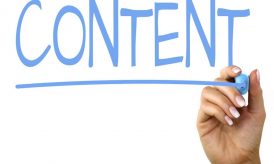Here are ten tips that you should seriously consider when you are doing your on-page SEO. Many people know to fill in their tags on the page, but very few keep in mind the tips on this article, which is a shame because they are doing themselves a disservice if they do not.

This article has tips that apply to a wide range of tags, from title tags to tag clouds on blogs.
Add Acronyms
Many people are unsure if acronyms are even understood by search engines because they can stand for so many different things, plus many acronyms actually make up words. Nevertheless they will help you more if they are included than if they are excluded. For example the acronym “SEO” is searched for frequently, to the point where it is hard to believe that Google or Bing do not index it.
Use modifiers for SEO benefit
Words such as “buy”, “best”, “reviews”, “offers” and “cheap” are modifiers but they are also modifiers that are used frequently by searchers. You will gain a certain SEO benefit if you use them on their own, and if you use them as modifiers, such as, “Cheap Chairs.”
Use numbers if you have a blog and avoid them if you do not
If your blog post has a number in it such as “20 greatest women’s beards,” then you will gain more traffic because a list blog post is a lot easier to skim read, and people look at blog posts to skim read them. If you do not have a blog post then you will not benefit from having numbers in your tags. For example if you sell baths and someone is searching for baths they will not type in “50 greatest baths,” they will simply type in “best baths.”
Think of your keywords as key phrases
Single keywords are more popular but you must remember that they are much untargeted and are unlikely to bring you your desired traffic. If you use key phrases then you will get traffic from the singular keywords and from the larger key phrases too. For example the key phrase, “French Cheeses” will bring you traffic from the words “French”, “Cheese” and “French Cheese”. Put key phrases into your tags for more SEO effect.
Put your keywords near the beginning of your tags
A long time ago the search engines put a lot of importance on the first few words of a tag. This may be because the user is more likely to see the first few words of the tag, or simply because the programmers believe that the most important words will be spelled out first by users. Nevertheless, even though the likes of Google have been updated frequently for quite a few years, we have no reason to believe that this rule has been removed from the Google program.
Use pipes (|) or hyphens (-) for effective SEO
This is a slightly controversial method, which it probably better used with some types of tags rather than others. The method is to separate your tagged words with hyphens or pipes. Doing this makes physically reading the tags a little easier.
If you add hyphens to your tags then they will appear as single keywords in the eyes of the search engines. So you should not put hyphens between keywords that you wish to remain as key phrases (more than one word). For example, “Foot-step” will be read as “Foot step” and “FootStep”, but if you want to keep the words as a key phrase such as “Rotten burger” then do not put a hyphen between them.
Add in the full named description of your acronyms too, because people may search for the full named version if your acronym is used by multiple groups such as “AA” or “AAA.”
Feel free to use stop words but keep them out of prominent positions
Stop words are words that are often ignored by search engines such as “by”, “as” and “its”. It does not work for all small words such as “the” and “and”, because those words are often part of titles of books and movies (e.g. The Da Vinci Code). However do not use these words in prominent positions such as at the beginning of tags. If you must use them then use them in long tailed keywords. For example a person searching for a book my search for the book title followed by the word “by” and then the author name. So you could use a long tailed key phrase which included the “by” and the authors name.
Your homepage title
This tip refers more to your homepage’s title tag. You need to make the first word the name of your brand or the name of your website. This is because when people add your website to their favorites it will fall under the first word of the title tag. Therefore if you start your tag with “The” then it will appear in the “T’s” on some people’s favorites aggregator. They will have a hard time finding you and may assume that they didn’t save you into their favorites correctly.
Go easy on your keywords
There are many conflicting opinions about how many keywords are suitable in things such as the keywords Meta tag. There are also conflicting ideas on how many keywords should be in ALT tags on pictures, or tag clouds on blogs. You should really research into the views of some of the leading experts, suffice it to say that fifteen keywords is not a bad number. Fifteen keywords seems to be the median consensus number by experts when it comes to how many keywords is bordering on too many. Obviously fifteen keywords for an ALT description however may be pushing it at bit.
Unique page titles
Every page should have its own page title that is unique. Each unique title must have a keyword or two within it. Make sure you add a title tag to your web page and that you include your title within it. Make your title easy to understand and read so that people are more likely to click on it on the search engine results pages.
















If you do a good onpage seo optimization some of your pages can become top even without any extra promotion. I would also recommentd not to make titles too long as they can be confusing and people try to avoid such pages.
i learn two point Use modifiers for SEO benefit and Feel free to use stop words but keep them out of prominent positions, this is new tricks for me
thanks for share
The title tag is the clickable link on a search results page, so it needs to be attractive to potential visitors. Include keywords for the search engine spiders, but don’t overdo it. It’s important to convey what the benefit of visiting that page is.
Great Article. I agree with the above points. To add on this, I also would like to point out the need for meta descriptions. Instead of leaving it blank and wait for Google to pick from the content of your page, you can add this up and ensure that your description has one of the keyword you are targeting. Otherwise, great article.